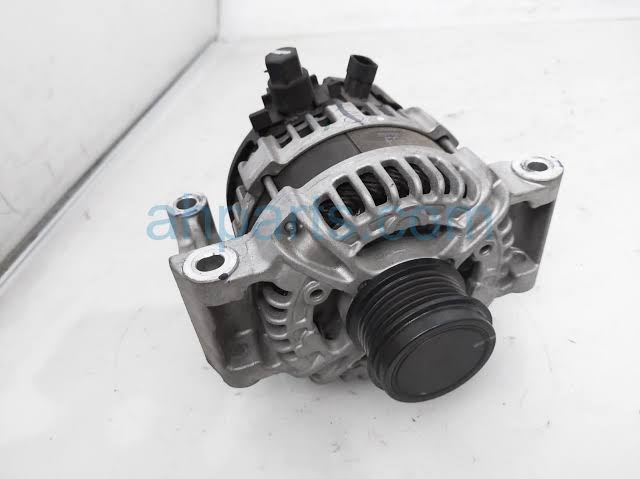Understanding Your GMC Terrain Alternator
The alternator is a crucial component of your GMC Terrain, responsible for powering the vehicle’s electrical systems and keeping the battery charged. Without a properly functioning alternator, your Terrain would quickly run into a host of issues, from a drained battery to malfunctioning electronics. In this blog, we’ll delve into the role of the alternator, common symptoms of alternator problems, maintenance tips, and steps for replacing a faulty alternator.
What Does the Alternator Do?
The Function of the Alternator
The alternator’s primary job is to convert mechanical energy from the engine into electrical energy. This electrical energy powers all the electrical components in your GMC Terrain, including the lights, radio, air conditioning, and various sensors. It also recharges the battery, ensuring your vehicle starts smoothly every time you turn the key.
How It Works
The alternator is driven by a belt connected to the engine’s crankshaft. As the engine runs, it spins the alternator, which generates electricity through electromagnetic induction. This electricity is then distributed throughout the vehicle and used to charge the battery.
Symptoms of a Failing Alternator
Warning Lights
One of the first signs of a failing alternator is the appearance of a warning light on the dashboard, often shaped like a battery or labeled “ALT” or “GEN.” This light indicates that the alternator is not producing enough voltage to charge the battery.
Dimming or Flickering Lights
If your headlights or interior lights dim or flicker, it could be a sign that the alternator is struggling to supply enough electrical power.
Weak or Dead Battery
A failing alternator won’t properly charge the battery, leading to a weak or dead battery. If you frequently need to jump-start your vehicle, the alternator could be the culprit.
Strange Noises
A failing alternator can produce unusual noises, such as grinding or whining. These sounds may be due to worn bearings or other internal issues within the alternator.
Electrical Issues
Malfunctioning or inconsistent behavior of electrical components, such as power windows, radio, or air conditioning, can also indicate alternator problems.
Maintaining Your GMC Terrain’s Alternator
Regular Inspections
Regularly inspect your alternator and the serpentine belt that drives it. Look for signs of wear, cracks, or fraying on the belt, and ensure it is properly tensioned.
Clean Connections
Keep the battery terminals and alternator connections clean and free of corrosion. Corrosion can impede electrical flow and reduce the alternator’s efficiency.
Listen for Noises
Pay attention to any unusual noises coming from the alternator. Early detection of strange sounds can help prevent more significant issues down the line.
Check Voltage
Use a multimeter to check the voltage output of your alternator. A healthy alternator should produce between 13.5 and 14.5 volts when the engine is running. If the voltage is outside this range, it may be time to replace the alternator.
Replacing a Faulty Alternator
Gather Necessary Tools
Before starting, ensure you have the necessary tools, including a socket set, wrenches, a multimeter, and a replacement alternator compatible with your GMC Terrain model.
Disconnect the Battery
To prevent any electrical mishaps, disconnect the negative terminal of the battery before working on the alternator.
Remove the Serpentine Belt
Locate the tensioner pulley and use a wrench to release the tension on the serpentine belt. Slide the belt off the alternator pulley and move it aside.
Disconnect Electrical Connections
Carefully disconnect the electrical connectors from the back of the alternator. Note their positions to ensure correct reinstallation.
Remove the Alternator
Unbolt the alternator from its mounting bracket and carefully remove it from the engine bay.
Install the New Alternator
Position the new alternator in the mounting bracket and secure it with the bolts. Reconnect the electrical connectors to the back of the alternator.
Reinstall the Serpentine Belt
Use the wrench to release the tension on the tensioner pulley and slide the serpentine belt back onto the alternator pulley. Ensure the belt is properly aligned with all pulleys.
Reconnect the Battery
Reconnect the negative terminal of the battery. Start the engine and check the voltage output of the new alternator with a multimeter to ensure it is functioning correctly.
Conclusion
The alternator in your GMC Terrain is essential for keeping your vehicle’s electrical systems running smoothly and ensuring your battery stays charged. By understanding its function, recognizing the signs of a failing alternator, and following proper maintenance and replacement procedures, you can keep your GMC Terrain running reliably and avoid potential breakdowns. Regular inspections and timely replacements are key to maintaining the health of your vehicle’s electrical system and enjoying a worry-free driving experience.




Post Comment